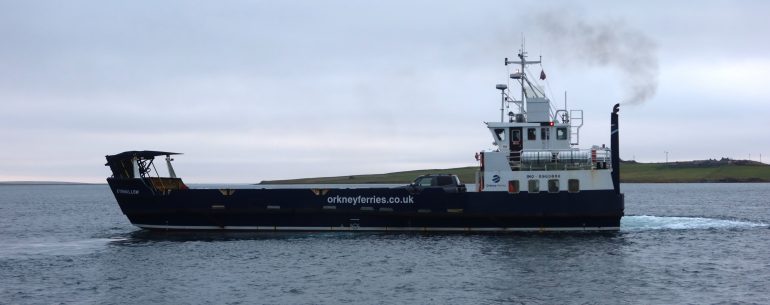Another textbook springing-off demonstration saw us heading off again just after 9am. This time our destination was slightly uncertain. The wind, infuriatingly, had gone round to the SE and so, once clear of Sumburgh Head, the skipper tried to see if we could make Fair Isle. This is an island around 20 miles south of Sumburgh Head and, if possible, he wanted to stop there.
This gave us a chance to reflect on waves as we bounced over a wide variety. They started quite short and steep as the tide around Sumburgh Head compressed them and, while they gradually got longer, the increasing wind was building both the swell and the wind-blown waves. This made for a challenging ride and cut our speed to around 3-5 knots (generally at the lower end of this) as we tried to forge through them, while they conspired to obstruct us. They won and around 4pm we bore off heading just west of south towards the Orkneys. While we were still motorsailing, the motion improved instantly and life below became more manageable. Our speed jumped as well as we took a better angle through the wind-blown heaps of water and gradually we started to make much better progress. We finally anchored in the lee of Sanday island around 9pm and had a very welcome supper without the food constantly attempting to relocate itself on the table as it had been at lunchtime. On the way in we had limited visibility, not least because it was dark, but also with quite heavy cloud, so we would have to wait until the morning to see where we were.
Sanday is actually the third largest of the Orkney islands and is just south of North Ronaldsay. The name stems from Norse. They named the island Sandey or Sand-øy – an imaginative name given the preponderance of sandy beaches. The Scots and English-speaking inhabitants then renamed it “Sanday”. There is a similarly named island – Sandoy – in the Faroe Islands. For around seven years, the island was unique on the Orkneys in having a train service. The Sanday Light Railway operated between Braeswick and Laminess from 1999 to 2006. However, it struggled in terms of economic viability and it eventually shut at the end of 2006. By 2020 the last of the tracks had been lifted and removed – all evidence gone.
